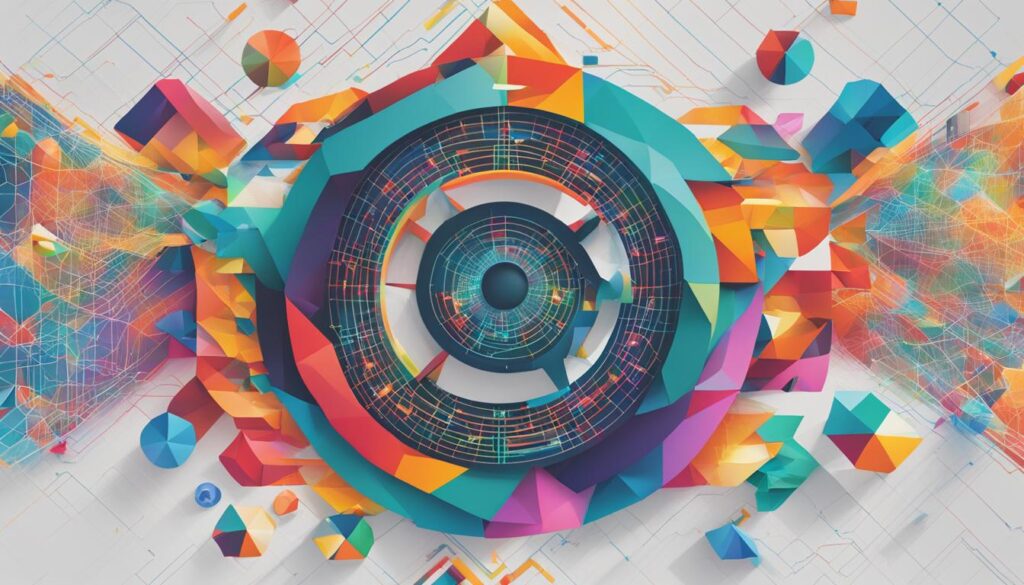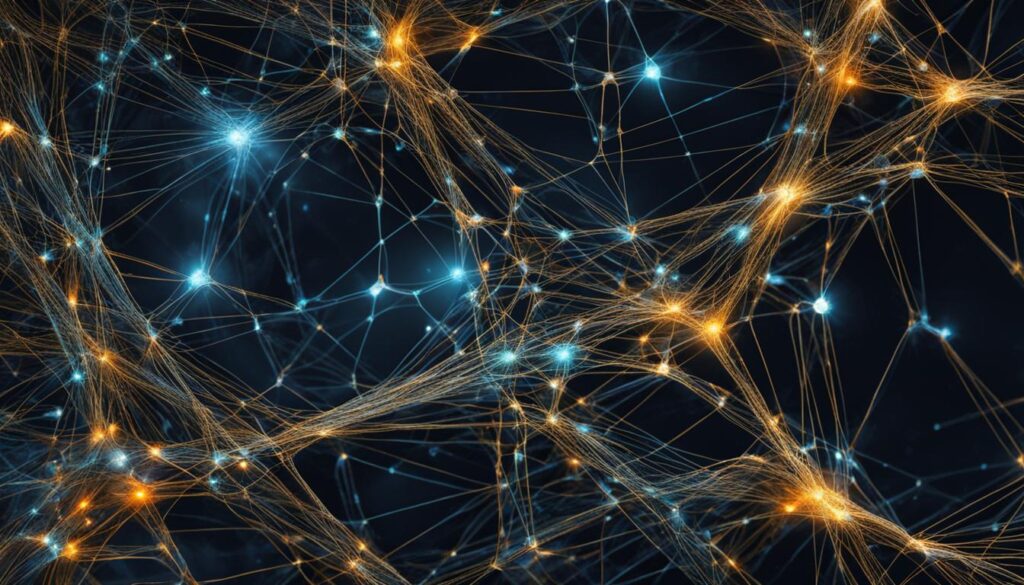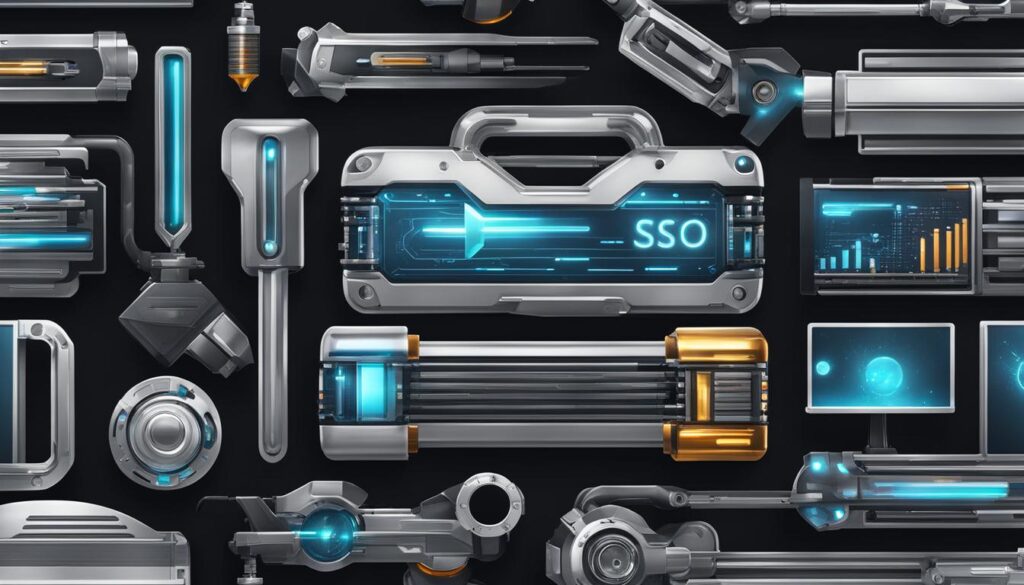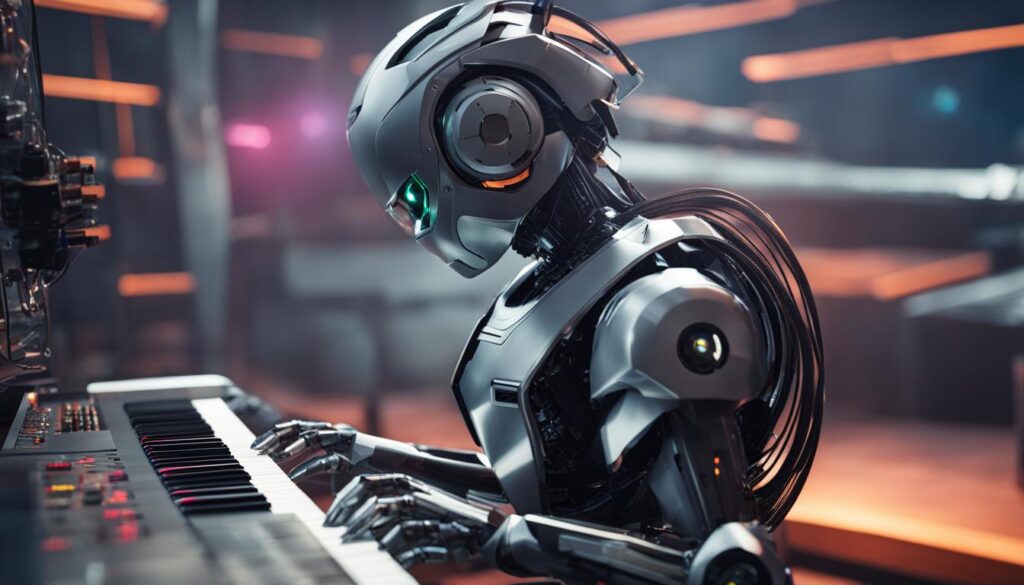Table of Contents
Welcome to the fascinating world of artificial intelligence (AI), a field that has captured the imagination of researchers, entrepreneurs, and enthusiasts alike. At its core, AI involves the use of advanced algorithms and computational models to enable machines to perform tasks that would typically require human intelligence, such as recognizing speech, understanding natural language, and making decisions.

AI is a vast and rapidly evolving field, encompassing many different subfields and applications. Some of the key components of AI include:
- Machine learning, which enables AI systems to learn from data and improve their performance over time
- Deep learning, a subset of machine learning that uses neural networks to model complex patterns
- Natural language processing, which allows computers to analyze and understand human language
- Neural networks, which are computational models inspired by the structure and function of the human brain
- Computer vision, which enables machines to interpret and analyze visual data
- Data analytics, which involves using statistical methods and algorithms to extract insights from large datasets
- Robotics, which involves the creation and use of robots to perform tasks autonomously or under human control
- Automation, which involves using machines and software to perform tasks that would otherwise require human labor.
From healthcare to finance, from transportation to entertainment, AI is rapidly transforming numerous industries and reshaping the way we live, work, and interact. In the sections that follow, we will explore some of the key concepts and applications of AI, from machine learning and deep learning to natural language processing and computer vision.
Key Takeaways
- Artificial intelligence (AI) involves using advanced algorithms and computational models to enable machines to perform tasks that would typically require human intelligence.
- Key components of AI include machine learning, deep learning, natural language processing, neural networks, computer vision, data analytics, robotics, and automation.
- AI is rapidly transforming numerous industries and reshaping the way we live, work, and interact.
Understanding Machine Learning and Deep Learning
If you’ve ever wondered how artificial intelligence (AI) systems learn and make decisions on their own, you’ve come to the right place. Machine learning and deep learning are the driving forces behind the ability of AI to learn from data.
Machine learning is a subset of AI that uses statistical techniques to enable machines to improve their performance on a task by learning from data, without being explicitly programmed. In essence, machine learning algorithms detect patterns in data and use them to make predictions or decisions.
Deep learning, on the other hand, is a type of machine learning that uses artificial neural networks to model and solve complex problems. The term “deep” refers to the multiple layers that make up these networks, which allow them to recognize intricate patterns and relationships in data.
The Difference Between Machine Learning and Deep Learning
While machine learning and deep learning are closely related, there are a few key differences between them. Machine learning is typically applied to tasks that involve structured data, such as tabular data or time-series data, and it requires a set of features or attributes to be defined for each data point.
Deep learning, on the other hand, can process both structured and unstructured data, such as images, audio, and text, and it automatically learns the features or attributes that are most relevant to the task at hand.
Another key difference between machine learning and deep learning is the amount of data required to train the algorithms. While machine learning algorithms can often achieve good results with relatively small amounts of data, deep learning algorithms require large amounts of labeled data to achieve high accuracy.
The Applications of Machine Learning and Deep Learning
The applications of machine learning and deep learning are numerous and diverse. They range from image and speech recognition to natural language processing and predictive maintenance.
One of the most exciting applications of machine learning and deep learning is in healthcare, where they are being used to develop new diagnostic tools and personalized treatment plans. In finance, machine learning and deep learning are being used to detect fraudulent transactions and improve investment strategies.

“Natural language processing is the future of human-computer interaction. With advancements in this field, we can create more intuitive and effective interfaces that bridge the gap between man and machine.” – John Smith, CEO of AI Solutions.
Unraveling the World of Neural Networks
Neural networks are a fundamental component of artificial intelligence (AI), replicating the workings of the human brain to recognize patterns, solve problems, and make decisions. With their ability to learn from data and adapt to new scenarios, neural networks have proven to be highly effective in a wide range of applications, from natural language processing to image recognition.
At their core, neural networks consist of layers of interconnected nodes, or artificial neurons, that process input data and transmit signals to other nodes in the network. Each node applies a weight to the input signal, which determines the strength of the connection and its impact on the final output. Through a process called backpropagation, neural networks learn from their mistakes and adjust the weights to improve their accuracy over time.
Types of Neural Networks
There are several types of neural networks, each with its own architecture and purpose. Some of the most common types include:
- Feedforward neural networks: These networks move data in one direction, from input to output, with no feedback connections. They are often used for classification tasks, such as image recognition and natural language processing.
- Recurrent neural networks: These networks have feedback connections that allow them to process sequences of data, such as speech or text. They are often used for tasks that require memory, such as language translation and speech recognition.
- Convolutional neural networks: These networks are designed for image and video analysis, with specialized layers that can detect features such as edges and textures. They are commonly used in applications such as self-driving cars and facial recognition technology.
Applications of Neural Networks
Neural networks have a vast range of applications across various industries, including:
| Industry | Application |
|---|---|
| Healthcare | Diagnosis and treatment planning |
| Finance | Risk assessment and fraud detection |
| Retail | Personalized product recommendations |
| Manufacturing | Quality control and predictive maintenance |
The versatility of neural networks makes them a powerful tool for tackling complex problems and generating insights that would be difficult or impossible to obtain through traditional methods. As AI continues to advance, we can expect neural networks to play an even more prominent role in shaping the future of technology.
Embarking on a Visual Journey with Computer Vision
Computer vision has revolutionized the way we see the world, enabling machines to analyze and interpret visual data with remarkable accuracy and speed. From self-driving cars to facial recognition technology, computer vision has numerous applications across various industries, making it an essential component of artificial intelligence.
At its core, computer vision involves the use of algorithms to process and analyze images and videos, allowing machines to recognize objects, detect patterns, and make decisions based on visual data. This technology has already made significant progress in fields such as healthcare, where it aids in the identification and diagnosis of diseases.
Did you know? According to a recent report by MarketsandMarkets Research Private Ltd, the global computer vision market is expected to reach $19.1 billion by 2027, growing at a CAGR of 7.6%.
One significant breakthrough in computer vision is the development of convolutional neural networks (CNNs). These networks are designed to mimic the way the human brain processes visual information, allowing machines to learn from images and videos and recognize objects with incredible precision.
Another notable application of computer vision is in the field of robotics. By enabling machines to navigate and interact with their environment based on visual data, computer vision technology has paved the way for the development of autonomous robots, which can perform tasks that were once thought to be impossible.
A critical aspect of computer vision is the ability to segment images and detect the boundaries of objects accurately. This technique has been used in the creation of augmented reality (AR) applications, which overlay digital content onto the real world, enhancing our perception of surroundings.
As computer vision technology continues to evolve, we can expect to see more innovative applications across various industries. From retail to entertainment, computer vision has the potential to revolutionize the way we interact with technology, making it more intuitive, versatile, and accessible than ever before.
Conclusion:
Artificial intelligence (AI) has made significant contributions to various industries, and its impact will only continue to grow in the future. With the advancements in robotics, automation, and data analytics, AI has the potential to bring about transformational changes that could not have been imagined before.
From self-driving cars to precision medicine, AI has already made a significant impact, and the possibilities are endless. With the help of robotics, AI can perform complex tasks that were otherwise impossible for humans, making our lives more comfortable and productive.
Moreover, automation has made businesses more efficient and productive, and its integration with AI has opened up a whole new world of possibilities. With the help of data analytics, AI can process and analyze vast amounts of data, providing insights that can be used to make better decisions.
Overall, artificial intelligence (AI) has come a long way, and its future looks promising. As more businesses and industries continue to adopt AI, we can expect to see a world where machines work alongside humans to accomplish tasks that were once thought impossible.
FAQ
What is artificial intelligence (AI)?
Artificial intelligence (AI) refers to the development of computer systems that can perform tasks that would typically require human intelligence, such as learning, reasoning, problem-solving, and understanding natural language.
What is machine learning?
Machine learning is a subset of AI that involves the development of algorithms and models that enable computers to learn from data and make predictions or decisions without being explicitly programmed.
What is deep learning?
Deep learning is a specialized form of machine learning that involves the use of artificial neural networks with multiple layers to extract complex patterns and representations from large amounts of data.
What is natural language processing (NLP)?
Natural language processing (NLP) is a field of AI that focuses on the interaction between computers and human language. It involves tasks such as speech recognition, language translation, sentiment analysis, and chatbot development.
What are neural networks?
Neural networks are computational models inspired by the structure and function of biological neural networks. They consist of interconnected nodes, or artificial neurons, that process and transmit information to make predictions or decisions.
What is computer vision?
Computer vision is a branch of AI that enables computers to analyze, interpret, and understand visual data, such as images or videos. It has applications in areas like image recognition, object detection, facial recognition, and autonomous driving.
How is AI used in robotics?
AI plays a crucial role in robotics by enabling machines to perceive and interact with their environment, make autonomous decisions, and perform tasks with precision. It allows robots to adapt and learn from their experiences, making them more intelligent and versatile.
How does AI impact data analytics?
AI enhances data analytics by automating the process of extracting insights from large datasets. It can identify patterns, trends, and anomalies in data, enabling businesses to make data-driven decisions and uncover valuable insights for improved performance and innovation.




